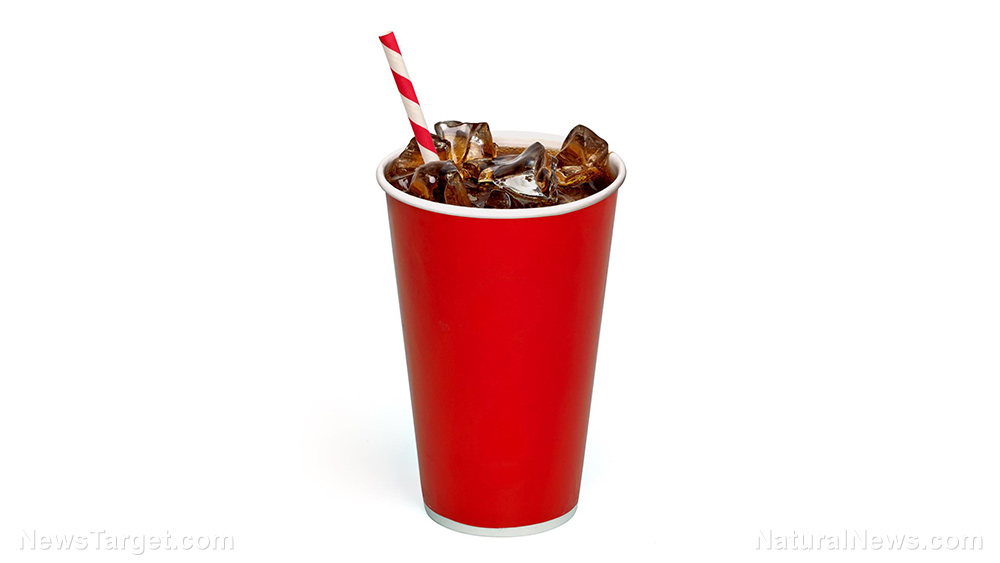Grow your own cup: Biodegradable cups made from gourds may end single-use coffee cups
08/30/2019 / By Edsel Cook

A New York-based design company called Creme is doing its part to reduce the amount of plastic trash churned out each year. Instead of manufacturing disposable coffee cups with plastic liners, the start-up grows biodegradable, organic containers from fruits.
For their project, Creme picked gourds from the Cucurbitaceae family. Related to squash and pumpkins, these plants bear fruits with thick, waterproof skin. Their rapid growth and regular fruit-bearing activity make gourds a fitting choice for large-scale cultivation.
The company grows gourds in 3D-printed molds that resemble cups. Since the fruits follow the contours of their growing space, they take on cup-like forms.
Creme says that their gourd-shaping technique is suitable for mass production. If successfully implemented, their biodegradable cups may eventually replace plastic-lined counterparts used for take-out drinks.
The durable outer skin and inner flesh of gourds become watertight once they’re dried. In centuries past, dehydrated gourds saw widespread use as decorations and holding vessels for liquids. (Related: Better than plastic: Study finds antimicrobial reusable coffee cups are safer.)
New disposable cups grown from gourds
Inspired by the traditional use of gourd containers, Creme modernized their approach and came up with the HyO design, which resembles the shape of faceted glass cups and has their ability to get stacked for storage.
On the company’s blog, a spokesperson wrote that they grow gourds into custom functional shapes. Whereas conventional plastic cups and flasks end up in landfills or oceans, the gourd-grown cups can be degraded in compost heaps.
Every part of the HyO cup is biodegradable. Creme believes their design can help cut down widespread plastic pollution.
While gourds can be grown outdoors, animals, floods, humidity, and weather can affect or even ruin the crop, so Creme currently grows the plants in a modified shipping container with future plans to transfer their growing operations indoors.
Creme business manager Tania Kaufmann explained how they took cues from the Japanese method of making square-shaped watermelons. Since the fruit has the ability to take the shape of the see-through molds they grow in, taking advantage of this ability results in fruits that are easier to transport, stack, and store in refrigerators.
Kaufmann and her co-workers at Creme hypothesized that the technique can be modified and adapted for gourds. They also decided to create cup-shaped fruits instead of square ones.
“Creme identified gourds as a fast-growing plant which bears robust fruits each season, developing a strong outer skin, and fibrous inner flesh,” she said. “Once dried, gourds have historically been used by our ancestors as receptacles like cups.”
This biodegradable coffee cup may help reduce air and plastic pollution
After exploring the traditional craft, Crème decided to use 3D printers to print out molds with functional shapes. The fruits grown in those molds assumed the forms of cups and flasks.
The process is sustainable, renewable, produces natural, biodegradable products, and doesn’t waste any materials.
On the other hand, the conventional approach for making paper-based cups produces more than 100 grams of carbon dioxide. The cups also sport waterproof liners made from unsustainable plastic polyethylene. Only a tiny fraction of each cup can be recycled after use.
According to experts, people have been throwing away about 2.5 billion coffee cups every year since 2011. Crème hopes that the HyO biodegradable cups can eventually stop the use of plastic products.
“Take-away cups and packaging are a standard of everyday life but they produce an incredible amount of waste that ends up in landfills and contaminates our precious waterways and landscapes,” the company’s spokesperson said. “What if aside from being a material resource, nature could also provide a solution for this worldwide issue?”
Sources include:
Submit a correction >>
Tagged Under:
3D printing, biodegradable, biodegradable cups, breakthrough, environment, fruits, functional food, garbage, goodtech, gourds, green living, innovations, inventions, paper cups, research, science and technology, single-use coffee cups, sustainable living, sustainable products, technology
This article may contain statements that reflect the opinion of the author
RECENT NEWS & ARTICLES
COPYRIGHT © 2017 REAL SCIENCE NEWS





















